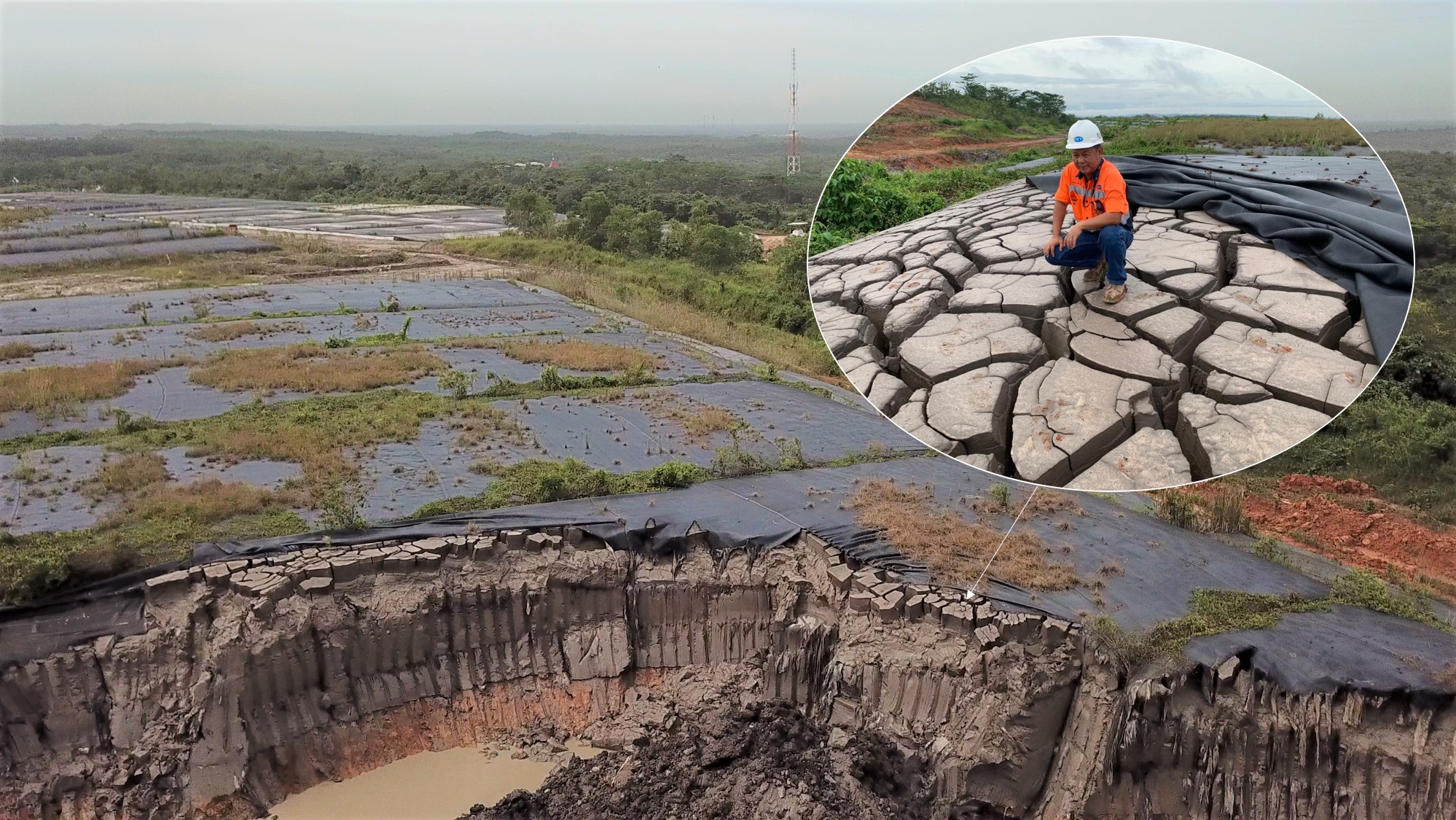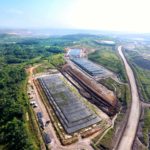Company:
TenCate Geosynthetics
Project Details
Fabric 1
Geotube®
Producer/Manufacturer:
TenCate Geosynthetics Asia
Primary Use:
Main Fabric
Engineer Company 1
Mine Geotechnical Department – PT. Adaro Indonesia
Design Company
Mine Geotechnical Department – PT. Adaro Indonesia
Architect Company
Mine Geotechnical Department – PT. Adaro Indonesia
Installation Company
PT. Intan Sarana Teknik - Indonesia
Please describe the project specifications
A large Indonesian mining corporation operating an open-pit coal mine in a remote part of South Kalimantan, Indonesia, faced a problem on how to dewater extremely high volumes of silt sediments from settling ponds that had reached maximum capacity.
The silts originated from silty rainwater runoff from the mine’s open-pits and the mine catchment area. Traditionally, the problem was resolved by constructing new ponds until a shortage of free land space eliminated that option. Cleaning out the ponds required a constant combination of silt dredging and truck relocation in a constant cycle to prevent runoff with high levels of total suspended solids (TSS) discharging into and polluting adjacent river channels.
As silt levels in the settling ponds increased, the cost of dewatering ponds became prohibitive. The client required a more proactive and permanent solution that is not only cost effective but one that optimizes land space and minimizes operational disruption. To address these challenges, the solution to clean out the settling ponds involved constructing a TenCate Geotube® dewatering facility to contain and dewater sediments extracted from the ponds.
To optimize land space, the design involved the stacking of Geotube® dewatering units up to seven layers high (> 10 m) based on custom units with a circumference of 36.6m and lengths ranging from 35 m to 101 m. This was to create several large solid tube landfill structures.
A stable dewatering pad was designed and constructed to support the mass of the large stacked tubes and to facilitate the drainage of filtrate discharge. The Geotube® was laid and pumped with slurry premixed with a cationic flocculant, until a maximum filled height of 2.65m. After the initial dewatering tubes have consolidated, the following layer was installed. This process was repeated until the 7th layer was completed.
The longest tube measured 101 m in length with a circumference of 36.6 m. Six of these supersized units were required to process 160,000 m3 of slurry which was pumped at a rate of 550 m3/hour for 24 hours a day. This alone generated 20,000 m3 of dry cake. In total, more than seven hundred Geotube® GT500D dewatering units were installed over the last five years to dewater more than 8,000,000 m3 of slurry. From this, 1.1mil m3 of dry cake was derived.
Manufacturing large Geotube® units of this extent was also a massive challenge. It was engineered with innovative fabric production capabilities and tube assembly techniques which required exceptional technical expertise and experience. Additionally, the Geotube® units were required to be packaged and transported in a way that facilitated easy handling and deployment at the mine’s remote site using unskilled labor. Despite the seemingly impossible logistics, the delivery and deployment of the tubes was successful.
Geotube® dewatering technology has proven to be a highly effective and efficient solution in this large-scaled project with significant benefits in cost savings and environmental sustainability. The design of stacking seven layers of dewatering tubes enabled land space to be well optimized while harnessing the performance of Geotube® technology. Geotube® dewatering technology improved the water discharge quality by substantially reducing the total suspended solids (TSS) being discharged back into the ponds with its ability of achieving high rates of solids retention and effluent discharge, as compared to conventional dewatering methods used. The solids contained in the dewatering tubes also eliminated the risk of rainfall erosion and silt runoff. The operations ran efficiently, and the client’s objectives were achieved.
Presently, the solids in the Geotube® dewatering tubes are being reclaimed as infrastructure earthworks fill, reducing carbon footprint while returning a revenue contribution to the mine operations.
What is unique or complex about the project?
This project has the distinction of being one of the biggest Geotube® dewatering projects ever undertaken in the world providing a wealth of knowledge on the economics of extreme large scale Geotube® dewatering. It paves the way for the future, contributing a significant role and purpose towards environmental remediation and sustainability.
Content is submitted by the participant. IFAI is not responsible for the content descriptions of the IAA award winners.




 TEXTILES.ORG
TEXTILES.ORG






